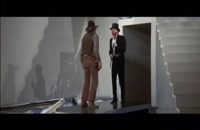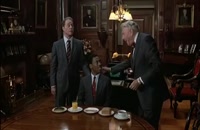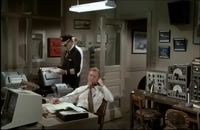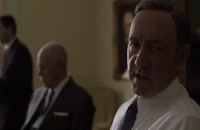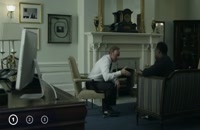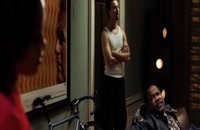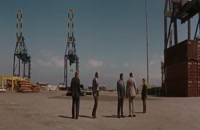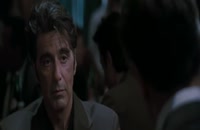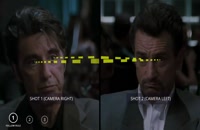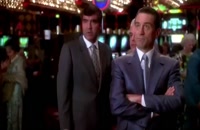نسبت ابعاد در فیلم | مهم ترین نکته ها
لینک مقاله: http://www.se7enart.ir/news/23
Aspect Ratios in Film: How to Choose The Most Cinematic Aspect Ratio
we break down aspect ratios, and jump into the current aspect ratios for video, film, TV, and the internet. What does aspect ratio mean? We give you a clear aspect ratio definition. So whether you’re curious about aspect ratio 16 9 or aspect ratio 4 3, you’ll know more than you did before, and feel confident going forward. Then, we help you figure out which aspect ratio is best for your next project. Understand this filmmaking technique so that you can use it creatively in 2019! Aspect ratios are the ratio of width to height that describes the shape of your filmed image. 2.35:1, is an aspect ratio that was introduced in the ‘50s as Cinemascope. It’s really wide, and you’ve probably seen it in westerns, grand adventures and historical epics. 1.85:1 is a slightly narrower aspect ratio. It was also introduced in the ‘50s, and is most commonly seen in dramas and comedies - but - it can appear in just about any genre. New digital standards introduce another aspect ratio to consider - 1.78:1, otherwise known as 16x9. This is the standard aspect ratio for television, and it’s the default for many web-based video players. Before you shoot a frame of your movie, you need to decide what aspect ratio use. First, study the playing field. What do other films in your genre typically do? Comedies are usually taller, so you can get your comedic wide shots without feeling like you’re too far away from your characters. Dramas are also usually shot taller, so close-ups can be more intimate. Adventures, sweeping epics, and stories that feature a striking or dramatic landscape tend to be shot very wide, so that even in a close-up, the setting remains present on-screen. Next, consider the level of realism you’re trying to achieve. Do you want people to respond to your film as fact or fantasy? Of the popular aspect ratios, the taller ones like 1.85 match our optical field of view more closely than does cinemascope. If you’re telling a gritty crime drama, you might want your image to approximate what we see in the real world. But if you’re telling a fantasy narrative, it might help to present it with a wider image - something that differs from how we normally see the world. Your next step is to consider the setting of your story. In some stories, the setting is really important. For those, you should choose an aspect ratio that best captures that setting, especially when you’ve got a character in the shot. This doesn’t always mean going for the widest aspect ratio possible. If you’ve got a film where the tall buildings of a big city play heavily into your story, you might want to consider a taller frame to capture that feeling
Aspect Ratios in Film: How to Choose The Most Cinematic Aspect Ratio
we break down aspect ratios, and jump into the current aspect ratios for video, film, TV, and the internet. What does aspect ratio mean? We give you a clear aspect ratio definition. So whether you’re curious about aspect ratio 16 9 or aspect ratio 4 3, you’ll know more than you did before, and feel confident going forward. Then, we help you figure out which aspect ratio is best for your next project. Understand this filmmaking technique so that you can use it creatively in 2019! Aspect ratios are the ratio of width to height that describes the shape of your filmed image. 2.35:1, is an aspect ratio that was introduced in the ‘50s as Cinemascope. It’s really wide, and you’ve probably seen it in westerns, grand adventures and historical epics. 1.85:1 is a slightly narrower aspect ratio. It was also introduced in the ‘50s, and is most commonly seen in dramas and comedies - but - it can appear in just about any genre. New digital standards introduce another aspect ratio to consider - 1.78:1, otherwise known as 16x9. This is the standard aspect ratio for television, and it’s the default for many web-based video players. Before you shoot a frame of your movie, you need to decide what aspect ratio use. First, study the playing field. What do other films in your genre typically do? Comedies are usually taller, so you can get your comedic wide shots without feeling like you’re too far away from your characters. Dramas are also usually shot taller, so close-ups can be more intimate. Adventures, sweeping epics, and stories that feature a striking or dramatic landscape tend to be shot very wide, so that even in a close-up, the setting remains present on-screen. Next, consider the level of realism you’re trying to achieve. Do you want people to respond to your film as fact or fantasy? Of the popular aspect ratios, the taller ones like 1.85 match our optical field of view more closely than does cinemascope. If you’re telling a gritty crime drama, you might want your image to approximate what we see in the real world. But if you’re telling a fantasy narrative, it might help to present it with a wider image - something that differs from how we normally see the world. Your next step is to consider the setting of your story. In some stories, the setting is really important. For those, you should choose an aspect ratio that best captures that setting, especially when you’ve got a character in the shot. This doesn’t always mean going for the widest aspect ratio possible. If you’ve got a film where the tall buildings of a big city play heavily into your story, you might want to consider a taller frame to capture that feeling


